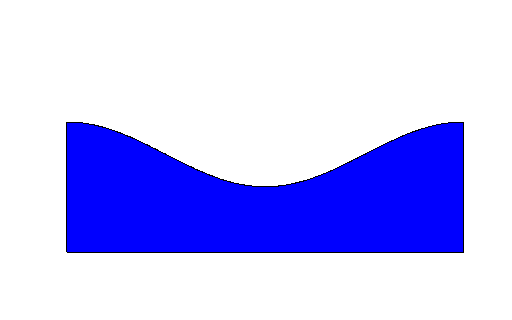

Closeup of the capillary region


Closeup of the capillary region
It is well-known that short capillary waves appear in the forward front of steep water waves. The understanding of the formation of this capillary waves is particularly important in remote sensing because the fine structure associated with short wavelengths scatters electromagnetic radiation. Capillary waves are also believed to be a mechanism for extracting energy from wind-generated waves and may play a significant role in wave breaking.
Through systematic and highly accurate numerical studies we captured
in detail the evolution of the small scale structure of the capillary waves,
identified the main sources in the generation of the capillaries, and computed
their asymptotic behavior in the zero-surface-tension limit. We found that
the capillary waves originate near the crest in a neighborhood where both
the curvature and its derivative are maximum. For fixed but small surface
tension, the maximum of curvature increases in time and the interface develops
a train of capillary waves in the forward front of the crest. Our
numerical experiments show that the minimum distance between adjacent capillary
crests approaches zero, signaling the formation of trapped bubbles as observed
by Koga in actual experiments of breaking waves. Our numerical study
also reveals certain scaling behavior of the capillary wavelength which
agrees well with recent experimental observation (Duncan et al. 99'). The
small-surface-tension solution is found to converge strongly to the zero-surface-tension
solution.